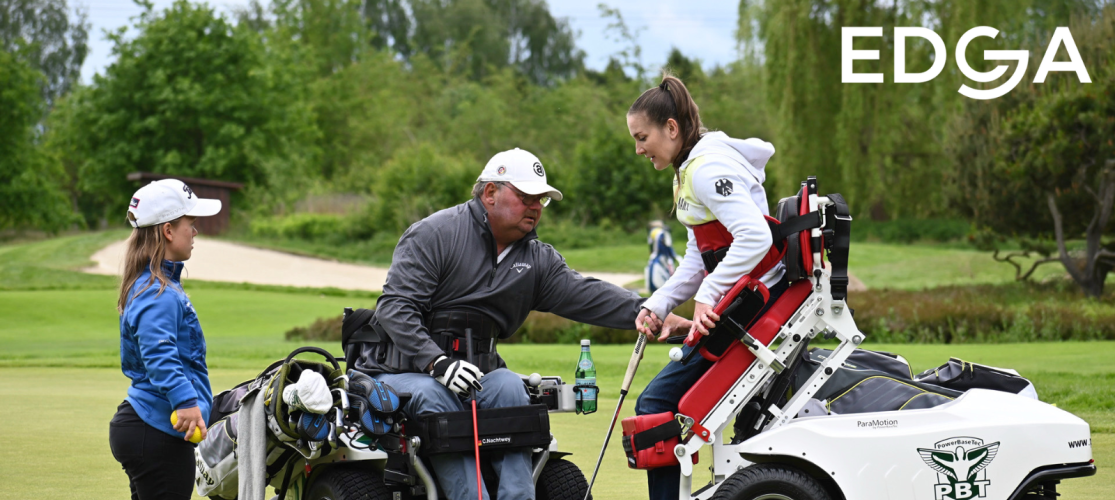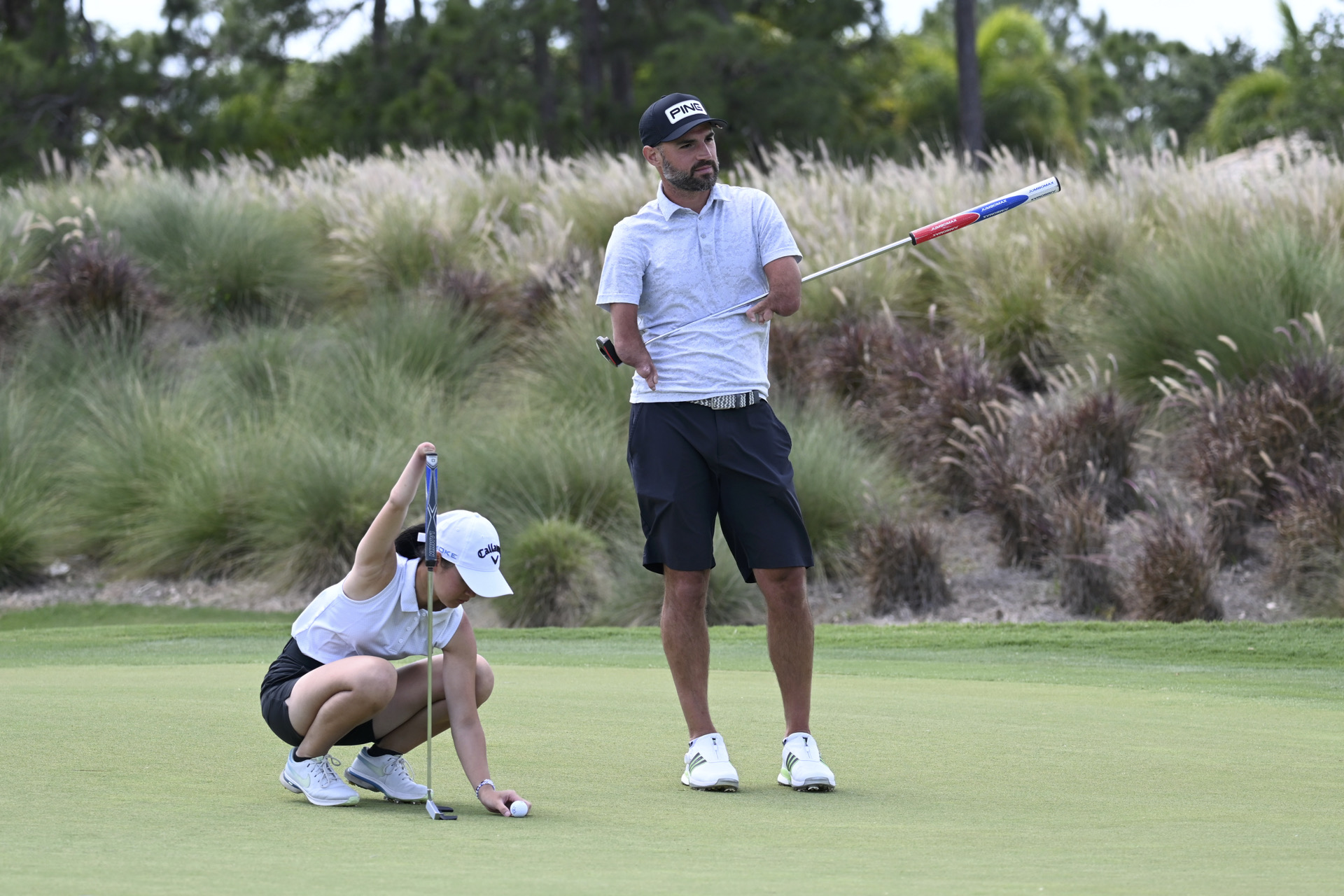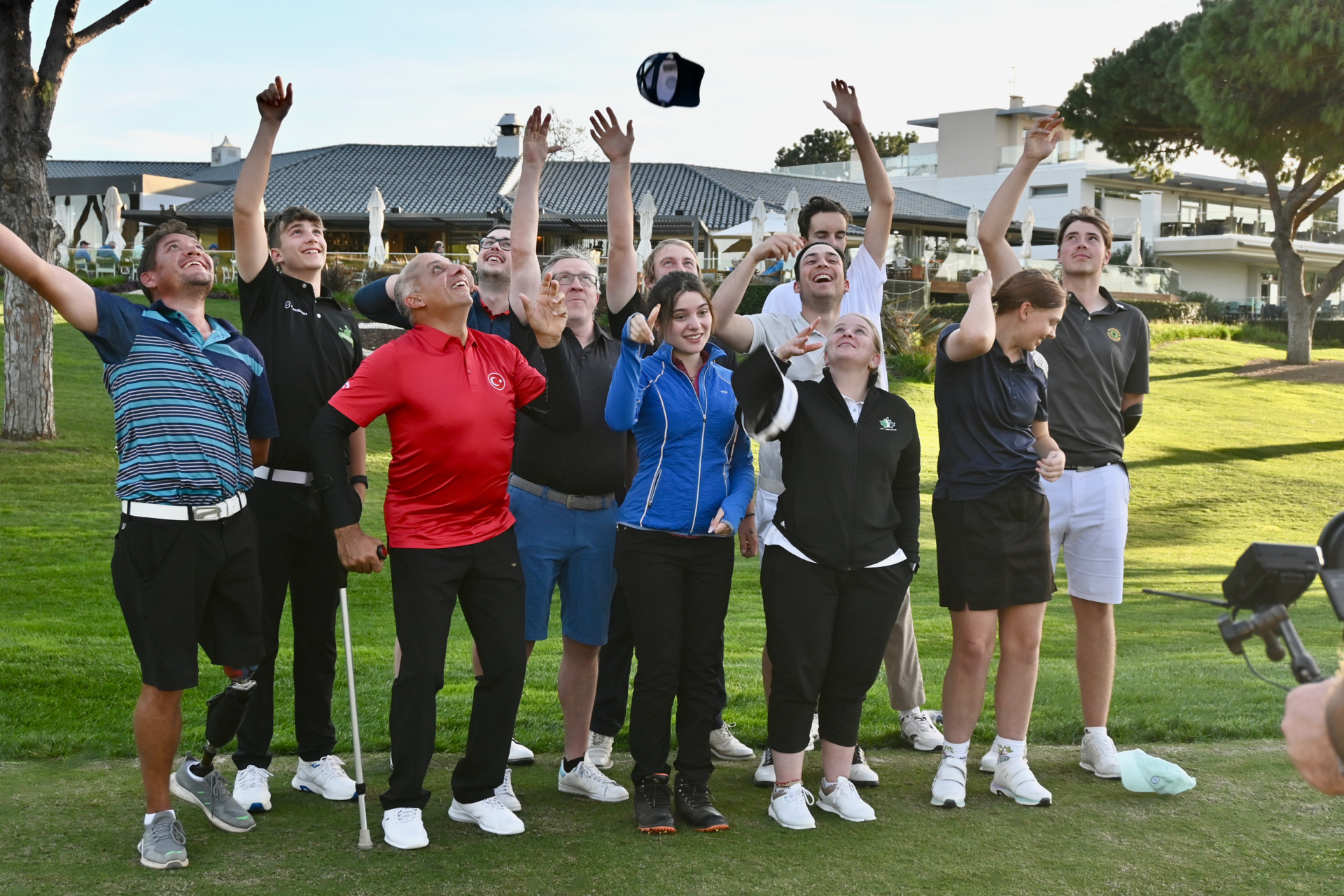

Imagine the Scene: Golf for Everyone
Featured article by EDGA
Imagine the Scene: Golf for Everyone
Picture this: the soft rustle of leaves in a faint breeze, the rhythmic crunch of tyres on gravel, and the steady hum of a golf cart weaving its way to the first tee. Ahead on the fairway, a group moves with quiet purpose. One player sits in a sleek, motorised wheelchair, angled toward the green, a putter resting lightly against the armrest. Another pauses to take a shot, guided by whispered instructions from a companion.
You might wonder: will they slow the pace? Can they truly enjoy the game as much as anyone else? The answer is an emphatic yes. And these golfers are asking for the opportunity to be part of the experience.
Golf, with its stationary ball, its handicap system that levels the playing field, and the individual rhythm of each player’s game, is uniquely suited to welcoming people of all abilities. For the one in six people globally who live with a disability, golf offers not just exercise, but connection, competition, and the joy of being part of something larger.
The good news? Creating an inclusive golfing environment is not just achievable—it’s simpler than you might imagine.
Golf’s Unique Inclusivity
Unlike many sports, golf needs little adaptation to accommodate players with disabilities. Visually impaired golfers rely on verbal cues from their guides; players with limited mobility may use supportive aids or swing from specially designed carts. The essence of the game remains unchanged. Inclusion, though, isn’t about everyone playing the same way. It’s about choice. The competitive golfer with cerebral palsy chasing a trophy, and the weekend player with one arm sharing laughs on the back nine, both love their form of golf have a place—and neither is more deserving/important than diminishes the other.
Golf thrives on its flexibility. This is its genius, a quiet adaptability that makes it a model for accessibility.
A World of Shifting Expectations
Today’s golfers live in a society increasingly shaped by the principles of equality, diversity, and inclusion. These ideas are no longer aspirational; they are the baseline expectations of a modern sport that mirrors the broader world.
Unlike sports that must create separate adaptive formats—wheelchair basketball or para-athletics—golf requires little reinvention. Its simple brilliance lies in its inclusivity. A ball waits motionless on the grass, inviting each player to take their shot in their own way. On the scorecard, the accomplishments of all players are measured equally.
Golf, perhaps more than any other sport, accommodates without compromise. It becomes a living emblem of what inclusion can be: a level playing field, a game where respect is intrinsic, and competition universal.

Overcoming Barriers
What holds us back from true inclusion? More often than not, it’s fear. Not the fear of being unkind, but the fear of getting it wrong—of saying the wrong thing or not knowing how to help. But in golf, as in life, the first stroke is the hardest. Start small. Invite someone with a disability to join you for a round. Ask how your club might be made more accessible. The act of beginning is often all it takes to overcome hesitancy.
EDGA, supported by The R&A, has spent 25 years crafting solutions that have become its 8-Stage Pathway—a roadmap towards inclusion. This guide helps clubs and players navigate the journey, addressing everything from physical access to community-building programmes. It demystifies the process, replacing uncertainty with confidence. Like a trusted caddie, it offers the right tools at the right time. You can access more information about EDGA’s 8-Stage Pathway here.
Why Inclusion Matters
Golf is more than a game: it’s a bridge between people, a way of connecting lives that might otherwise never intersect.
A shared round can weave together stories of perseverance and resilience, offering new perspectives and a deeper appreciation for the game and those who play it.
Inclusion benefits everyone. For those with disabilities, it’s an opportunity to engage and belong. For others, it’s the chance to learn, to grow, and to see the game—and the world—through new eyes.
The responsibility for creating this environment doesn’t rest solely with governing bodies or clubs. Every golfer can be an advocate for inclusion, a champion of the idea that golf is, and should be, a game for all.
Opening the Doors
To learn more about how you can contribute to an inclusive golfing future, visit www.edgagolf.com. Together, we can widen the fairways and ensure golf remains what it has always had the potential to be: a sport where everyone belongs.
